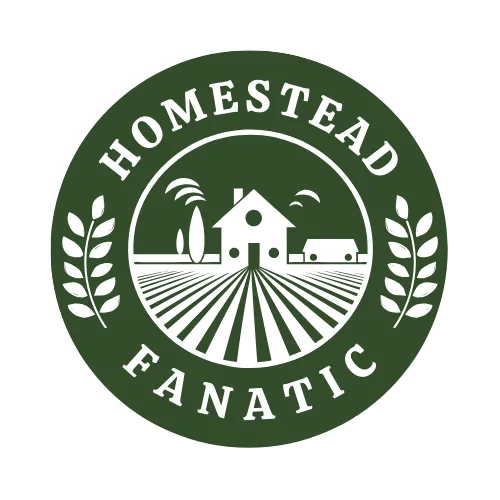
HOMESTEAD FANATIC BLOG
Discover amazing destinations, plan your perfect trip, and book unforgettable experiences. Our travel website makes traveling around the world easy, enjoyable, and hassle-free.
EXPLORE GREAT PLACES
THE HOMESTEAD BLOG

Slow Living & Homeschooling: Creating a Sacred Childhood
In today’s fast-paced world, the concept of slow living has emerged as a gentle rebellion against the hustle and bustle. For homeschooling families, slow living offers a beautiful opportunity to create a sacred childhood, filled with meaningful moments, mindful learning, and deep family connections.
What Is Slow Living?
Slow living is a lifestyle that encourages intentionality, presence, and simplicity. It invites us to savor each moment, embracing a life where less is more. For homeschoolers, slow living becomes a guiding philosophy that transforms education into an experience rooted in curiosity, creativity, and connection.
Why Slow Living and Homeschooling Go Hand in Hand
Homeschooling naturally aligns with the principles of slow living. Without the rigid structure of traditional school schedules, families have the freedom to design their days in a way that honors their unique rhythm. Children can explore topics at their own pace, dive deeply into subjects that spark their curiosity, and relish in unhurried learning moments.
Incorporating slow living into homeschooling allows families to prioritize emotional well-being and foster a love for lifelong learning. The home becomes a sanctuary where education isn’t rushed but is instead a sacred journey.
Creating a Sacred Childhood Through Slow Living and Homeschooling
A sacred childhood is one where children feel seen, heard, and valued. It’s about nurturing their sense of wonder and allowing them to grow in an environment that respects their natural development. Here are some ways to weave slow living into your homeschooling journey:
Savor Morning Rhythms: Begin each day with calm and intention. Light a candle, enjoy a warm cup of tea, and read aloud a favorite story. This gentle start sets a peaceful tone for the day and grounds the family in a shared experience.
Follow Nature's Lead: Nature is a perfect teacher for slow living. Spend time outdoors observing the changing seasons, listening to birds, or collecting leaves. Nature walks can become lessons in science, art, and mindfulness.
Embrace Unstructured Play: Unstructured play allows children to develop creativity, problem-solving skills, and resilience. Letting go of rigid lesson plans occasionally and giving kids the space to create, build, and imagine fosters a sense of freedom and autonomy.
Prioritize Connection: Slow living encourages connection — with ourselves, each other, and the world around us. In homeschooling, this means creating meaningful rituals, sharing meals together, and having heartfelt conversations.
Incorporate Life Skills: Daily tasks like cooking, gardening, and caring for animals are valuable lessons. These activities teach responsibility, patience, and the joy of simple work while reinforcing the principles of slow living.
The Benefits of Slow Living and Homeschooling
Families who embrace slow living in their homeschool often find that their children are more engaged and enthusiastic about learning. Without the pressure of keeping up with a strict curriculum, children can develop a sense of ownership over their education.
Additionally, slow living fosters emotional resilience and mindfulness. Children grow up understanding the value of rest and balance, which prepares them for a lifetime of well-being.
Creating a Space for Slow Learning
Transforming your home into a haven for slow learning doesn’t require perfection. It’s about creating a nurturing environment that invites curiosity and exploration. Here are a few practical tips:
Declutter Learning Spaces: A simple, organized environment reduces stress and encourages focus.
Curate Meaningful Resources: Choose books, art supplies, and tools that inspire wonder and creativity.
Establish Gentle Rhythms: Set predictable patterns for each day that provide comfort and stability.
Overcoming Challenges
Of course, slow living and homeschooling aren’t without challenges. It requires intentionality and a willingness to embrace imperfection. There will be days when the house is messy, lessons go unfinished, or tempers run short — and that’s okay. The beauty lies in learning to flow with the day and embracing grace.
Slow Living, Homeschooling, and the Sacredness of Childhood
At its heart, slow living is about reclaiming the sacredness of childhood. It reminds us that education isn’t a race but a journey. Homeschooling offers the gift of time: time to explore, to connect, and to nurture a child’s natural curiosity.
In a world that often prioritizes speed and productivity, slow living and homeschooling offer a countercultural path — one that leads to rich memories, deep learning, and an unshakeable sense of belonging.
Final Thoughts
Slow living and homeschooling go hand in hand in creating a sacred childhood. By embracing slowness, families can cultivate a home life that prioritizes connection, curiosity, and wonder. As we slow down, we allow ourselves to witness the magic of childhood and create memories that will linger in our hearts for a lifetime.
For families on this journey, remember: the days may feel long, but the years are fleeting. Embrace the beauty of each moment, knowing that slow living and homeschooling are gifts that shape not just your child’s education but their entire outlook on life.

POPULAR QUESTIONS
Asked Questions ?
Many people interested in homesteading ask about how to get started, what animals and crops are best for beginners, and ways to generate income from their land. Food preservation techniques are also a common topic, as self-sufficiency plays a key role in homesteading success. These FAQs provide a helpful starting point for anyone looking to embrace a more independent and sustainable lifestyle.
What is homesteading?
Homesteading is a lifestyle focused on self-sufficiency, which often includes growing your own food, raising livestock, preserving food, and using sustainable practices to reduce reliance on modern systems.
How do I start homesteading with little or no land?
Even if you don’t have a large property, you can start small by container gardening, keeping backyard chickens (if permitted), composting, and learning essential skills like food preservation and DIY projects.
What animals are best for a beginner homesteader?
Chickens, rabbits, and ducks are great starter livestock. They require less space, are relatively easy to care for, and provide eggs or meat while helping with pest control.
How can I make money from homesteading?
Many homesteaders generate income by selling eggs, honey, homemade goods, fresh produce, handmade crafts, or even offering homestead-related workshops.
What are the best crops for beginner homesteaders?
Easy-to-grow crops include tomatoes, zucchini, lettuce, radishes, and herbs like basil and mint. These require minimal maintenance and provide a great starting point for new homesteaders.
How do I preserve food for long-term storage?
Canning, dehydrating, freezing, and fermenting are all effective ways to preserve food. Each method has its benefits, depending on the type of food and your available storage space.

Your Gateway to Global Adventures Await Here.
Quick Links
Home
About Us
Services
Blog
Quick Links
Email:
